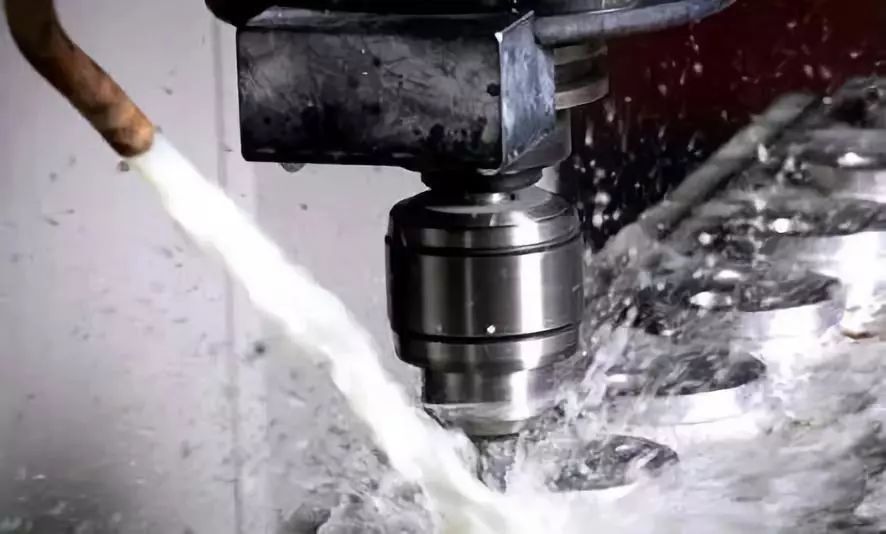First, the general steps of cutting fluid selection
The choice of cutting fluid must be determined by considering comprehensive factors such as machine tools, cutting tools, and processing technology, as shown in the steps of selecting cutting fluid.
Before selecting the cutting fluid according to the processing method and required accuracy, restrictive items such as safety and waste liquid treatment are set. Through these items, it can be determined whether to choose the two categories of oil-based cutting fluid or water-based cutting fluid.

If fire protection and safety are emphasized, water-based cutting fluid should be considered. When choosing water-based cutting fluid, the discharge of waste liquid should be considered, and the enterprise should have waste liquid treatment facilities. Some processes, such as grinding, generally only use water-based cutting fluid; for cutting with carbide tools, oil-based cutting fluid is generally considered.
Some machine tools require the use of oil-based cutting fluid at high timing, so do not easily switch to water-based cutting fluid, so as not to affect the performance of the machine tool. After weighing these conditions, you can determine whether to choose oil-based cutting fluid or water-based cutting fluid. After determining the main item of cutting fluid, the second step can be selected according to the processing method, required processing accuracy, surface roughness and other items and the characteristics of the cutting fluid, and then identify whether the selected and cutting fluid can meet the expected requirements . If there is a problem in the identification, it will be fed back to find out the cause of the problem and improve it, and finally make a clear selection conclusion.
2. Applicable occasions of oil-based and water-based cutting fluids
At present, there are many kinds of cutting fluids, and their performances are good or bad. If they are not selected properly, it will cause adverse consequences. Generally, water-based cutting fluid should be selected under the following questions:
①A place where oil-based cutting fluid may potentially cause a fire hazard;
②High-speed and high-feed cutting, the cutting area exceeds the high temperature, the smoke is intense, and there is a fire hazard.
③Considering the flow of the front and back processes, it is required to use water-based cutting fluid.
④ It is desired to reduce the pollution and dirt around the machine tool caused by oil splash, oil mist and diffusion surface, so as to keep the operating environment clean.
⑤Considering the price, for some easy-to-machine materials and cutting processes with low requirements on the surface quality of workpieces, the use of general water-based cutting fluids can meet the requirements of use and can greatly reduce the cost of cutting fluids.
Three, the following situations should consider choosing oil-based cutting fluid:
①When the durability of the tool has a large proportion to the economy of cutting (such as the tool is expensive, it is difficult to sharpen the tool, and the auxiliary time for loading and unloading is long, etc.).
②The precision of the machine tool is high, and it is absolutely not allowed to mix with water (so as not to cause corrosion).
③The occasions where the lubricating system and cooling system of the machine tool are easy to collude and the occasions where waste liquid treatment equipment and conditions are not available
Xinfa CNC tools have the characteristics of good quality and low price. For details, please visit:
CNC Tools Manufacturers – China CNC Tools Factory & Suppliers (xinfatools.com)
4. Precautions for cutting fluid
⑴The cutting fluid should have no irritating smell and no harmful additives to the human body to ensure the safety of users.
(2) The cutting fluid should meet the requirements of equipment lubrication and protection management, that is, the cutting fluid should not corrode the metal parts of the machine tool, damage the seals and paint of the machine tool, and not leave hard gelatinous deposits on the machine tool guide rails, so as to ensure the safety of the equipment and work normally.
(3) The cutting fluid should ensure the anti-rust oil effect between the workpiece processes and not rust the workpiece. When processing copper alloys, sulfur-containing cutting fluids should not be used. When processing aluminum alloys, a cutting fluid with a neutral PH value should be selected.
⑷The cutting fluid should have excellent lubricating performance and cleaning performance. Choose a cutting fluid with a high maximum non-jamming load PB value and low surface tension, and the cutting test has a good effect.
(5) The cutting fluid should have a long service life, and the machining center is particularly important at this time.
⑹ cutting fluid should be adapted to a variety of processing methods and a variety of workpiece materials.
⑺The cutting fluid should be low-pollution, and there is a waste liquid treatment method.
⑻ Cutting fluid should be affordable and easy to prepare. To sum up, when users choose cutting fluids, they can firstly select 2 to 3 cutting fluids with good overall performance according to the specific processing conditions. Affordable cutting fluid.
Post time: Aug-24-2023



